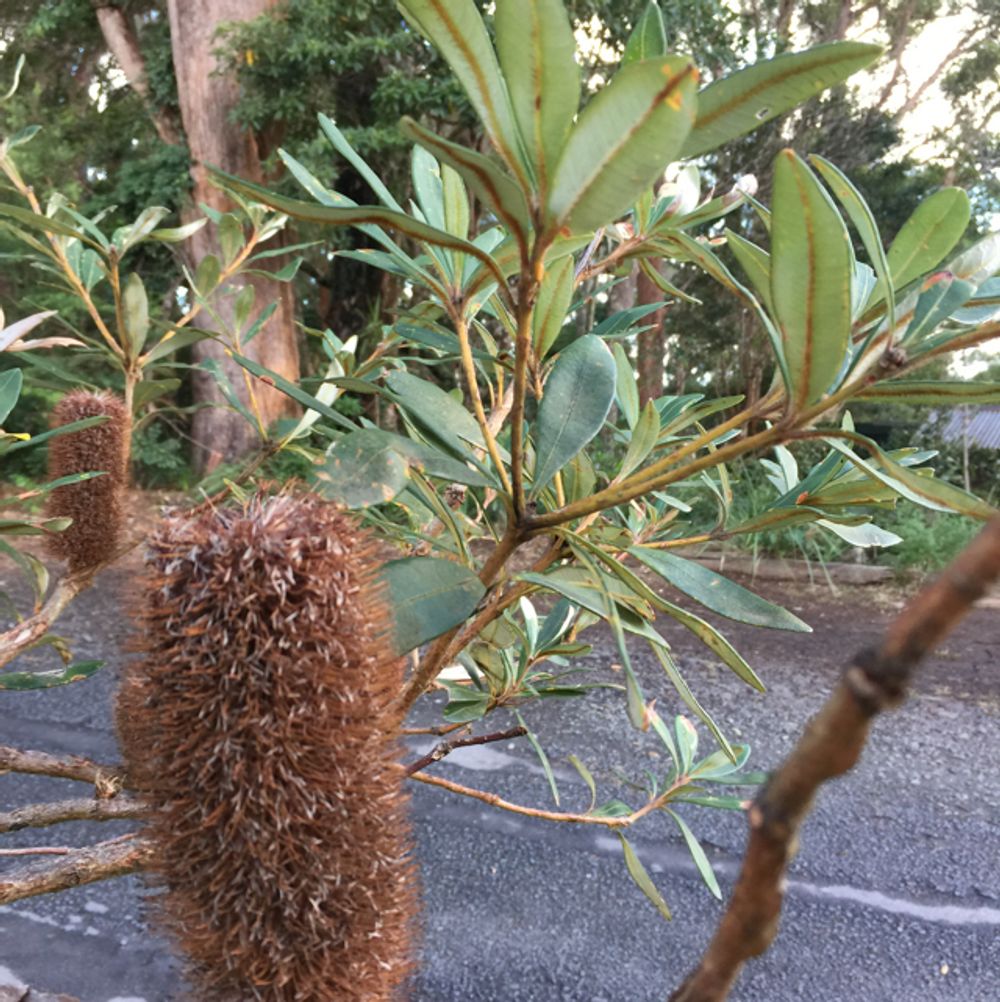Banksia
(Banksia)

Description
Banksia integrifolia, commonly known as the Coast Banksia, is a species of flowering plant native to the coastal regions of Australia. It is a member of the Proteaceae family and is one of the most widely distributed and recognizable species of Banksia. Description Banksia integrifolia is a large shrub or small tree that typically grows to a height of 4 to 15 meters, with a spreading, irregular form. It has a sturdy trunk and large, leathery leaves that are deep green in color and measure 10 to 20 cm in length and 2 to 4 cm in width. The leaves are lance-shaped and have serrated edges. The Coast Banksia produces large, showy spikes of yellow to gold-colored flowers that measure up to 30 cm in length. The flowers are arranged in clusters along the branches and are visited by a variety of nectar-feeding birds and insects, including honeyeaters, butterflies, and bees. The species blooms from spring to summer, with flowers appearing in profusion along the coast and in more sheltered locations. Habitat and Distribution Banksia integrifolia is a species that is well-adapted to coastal conditions, and is commonly found growing along the shorelines and sand dunes of southeastern Australia. It is also found in more sheltered locations, such as in valleys and on the margins of eucalypt forests. The species is able to tolerate a wide range of soil types, from sand to heavy clay, and is able to grow in areas with low nutrient levels. The Coast Banksia is widely distributed along the southeast coast of Australia, from Victoria to Queensland, and is also found on the offshore islands of the Bass Strait. It is a hardy species that is able to grow in a range of habitats, including coastal heaths, sand dunes, and rocky outcrops. Ecology Banksia integrifolia is an important species for a variety of wildlife, including birds, insects, and marsupials. The flowers provide an important source of nectar for honeyeaters, as well as for a variety of other nectar-feeding birds and insects. The species also provides habitat for a number of marsupials, such as the bush rat, and is an important food source for the western grey kangaroo. In addition to its ecological importance, Banksia integrifolia is also widely cultivated as an ornamental plant. It is valued for its striking yellow to gold-colored flowers and its ability to thrive in coastal conditions. It is widely used in landscaping and horticulture, and is often grown in gardens and parks, as well as in larger public spaces such as golf courses and parks. Conclusion Banksia integrifolia, also known as the Coast Banksia, is a versatile and hardy species that is widely distributed along the southeast coast of Australia. It is an important species for a variety of wildlife and is also widely cultivated as an ornamental plant. With its striking yellow to gold-colored flowers and its ability to thrive in coastal conditions, the Coast Banksia is a valuable and attractive addition to any garden or landscape. Banksia Genus Banksia is a genus of around 170 species in the plant family Proteaceae. These Australian wildflowers and popular garden plants are easily recognized by their characteristic flower spikes and fruiting "cones" and heads. Banksias range in size from prostrate woody shrubs to trees up to 30 metros tall. They are found in a wide variety of landscapes; sclerophyll forest, (occasionally) rainforest, shrubland, and some more arid landscapes, though not in Australia's deserts.
Taxonomic tree:







